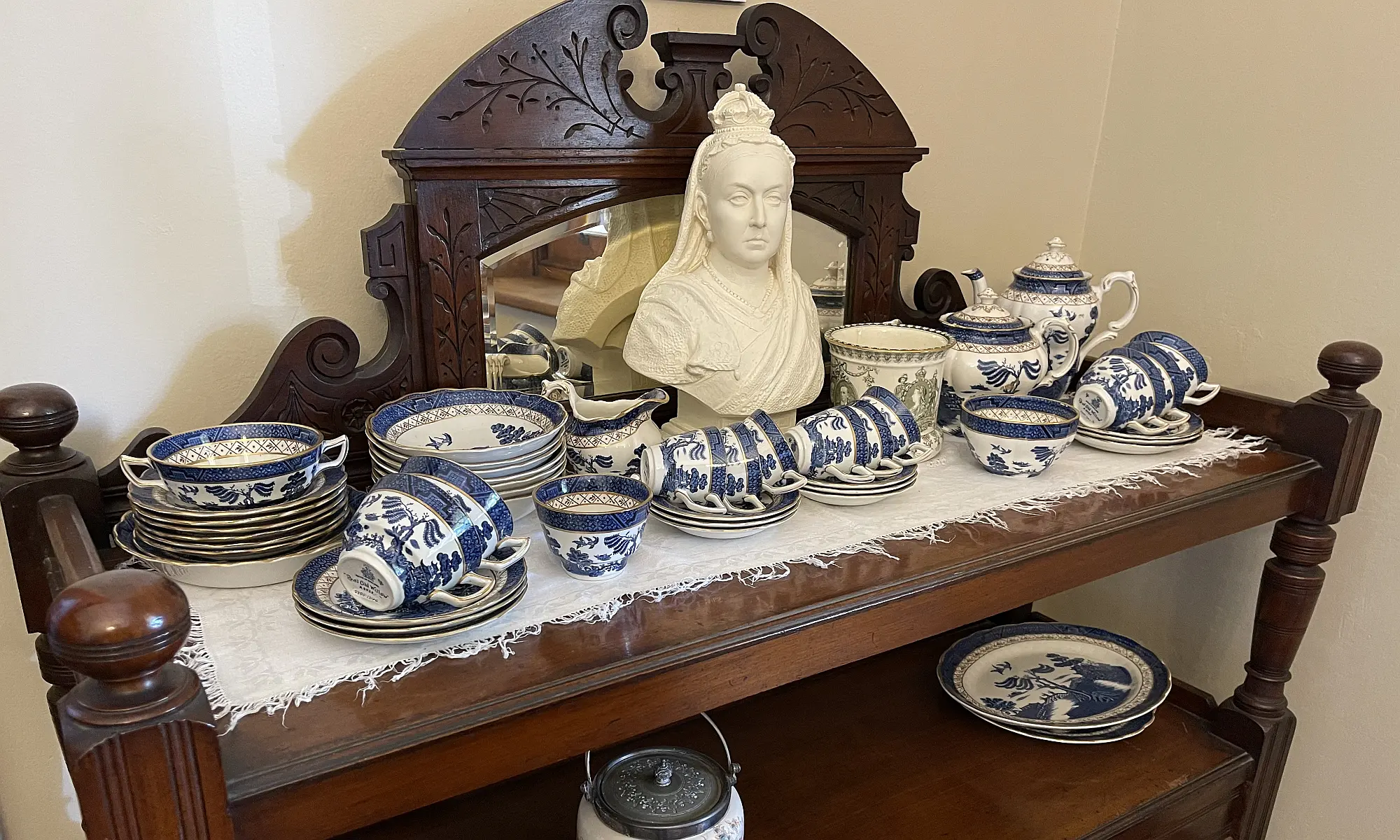Once again it is my pleasure to report to Council and the St. George Historical Society another year of intense activity and sustained public interest at Lydham Hall.
During the year 2,030 people visited the home, a decrease on the previous year but one caused almost entirely by a succession of petrol strikes which resulted in the cancellation of a number of group visits. Visitors from interstate and overseas were particularly extravagant in their praise of the home. Perhaps the most important visitor of the year was the internationally acclaimed Australian authoress, Christina Stead, who spent her childhood at Lydham Hall and whose book The Man Who Loved Children is centred on the house. Her visit in August was her first since she moved to Watson’s Bay in 1913.
Further development and restoration of the property has been maintained at a high level. The former upstairs storeroom has been completely renovated and is now open as an exhibition room displaying our extensive collection of clothing. Plans have been prepared for landscaping the rear garden and provision has been allowed by Council to refloor the verandah and reslate the roof. Arrangements have also been made to renovate the larger of the two upstairs display rooms. This will complete the total restoration of the inside of the building.
Another matter of importance has been the considerable amount of new information which has come to light about the building during the year as a result of research into the development of the suburb of Bexley which I undertook in connection with the writing of a book on the subject. Lydham Hall stands on portion of the original Bexley land grant. It has always been assumed that information on the building supplied by the previous owners had been correctly researched. This is not the case. Lydham Hall could not possibly have been built in 1855 as an elaborate plaque on the front of the building proclaims as Joseph Davis did not buy the land until November 1859. It was not built (as previously claimed) by a Dutch stonemason named James Benson but by a Swedish stonemason named Sven Bengtson and his son Solomon Peter Benson whose granddaughter is still living at Casula. Action is in hand to correct these facts.
The year under review has also seen a veritable flood of additional artefacts and objects of interest come to Lydham Hall, together with the purchase of a new hall table, the disposal of two surplus chests of drawers and the gift of an attractive period china cabinet by the National Trust.
As a further attraction, souvenir teaspoons of the house are now available and these have proved most popular.
Whilst much has been achieved, two problems remain. One is to see that the property is continually and effectively promoted and the second is to ensure that a constant stream of people is available to assist Miss Otton in conducting visitors through the home. Lydham Hall has brought great credit to both the Rockdale Council and the St. George Historical Society. The Council has more than played its part in the restoration and promotion of the building but the flow of people prepared to assist in showing visitors through the building has often been very thin indeed.
To those people who have helped, the Local Committee would like to express its deep appreciation for Lydham Hall simply could not function without them.
The Committee would also like to place on record its unreserved praise for the Curator, Miss Otton, for the way in which she conducts the home, her complete dedication to her job and the immaculate way in which the home is always kept. She is a unique lady in a unique position and we are most fortunate to have her services.
Finally, we wish to acknowledge the willing co-operation of Mr. Kevin Casey of Council’s Staff, and the technical expertise of Council’s senior carpenter, Mr. Lloyd Deller, who has done so many jobs for us with such expert results and with a sense of complete dedication and commitment.
Alderman R.W. Rathbone.
Hon. Secretary,
Lydham Hall Local Committee.
24th March, 1980.
This article was first published in the May 1980 edition of our magazine.
Browse the magazine archive.

